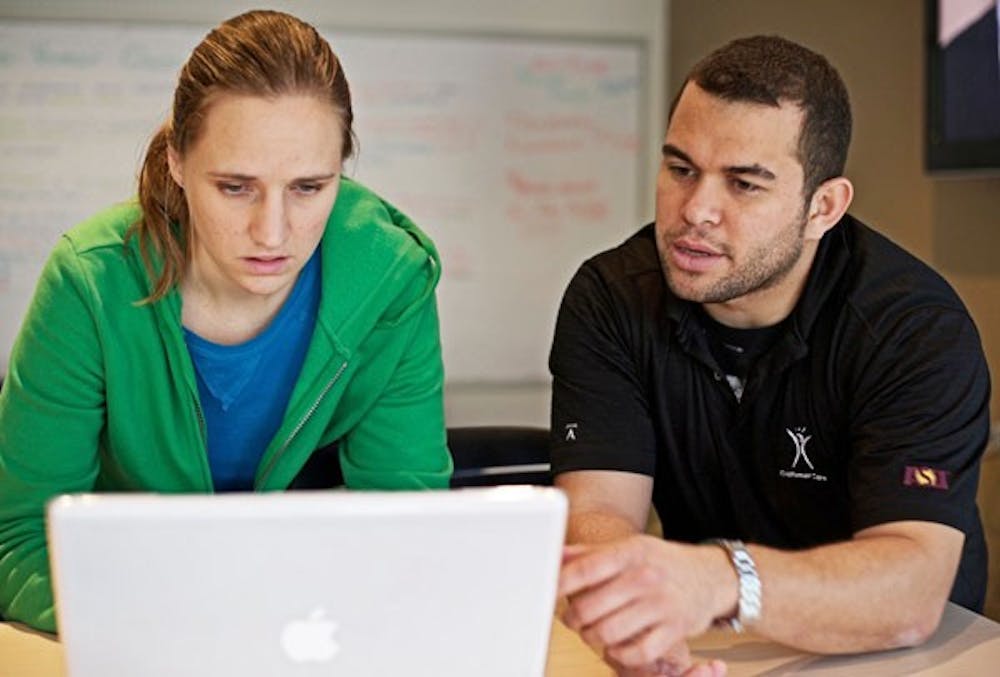The University Technology Office is bringing a handful of updates to Tempe ASU campus for the fall semester including a new version of Blackboard and an upgrade to Windows 7 for campus computers.
More than two years into a five-year plan strategic plan outlining the campus’ technological growth, the technology office has also taken steps to improve the University’s wireless network and change how the University stores its data.
In an April 2008 report prepared by the Technology Oversight Committee, the technology office outlined a list of goals to complete by 2012. Academic goals ranked highest in the report.
Technology Office spokesman Max Davis-Johnson said the office has been vetting Windows 7.
“I’m pretty confident. It is more reliable. Students can expect to see Windows 7 in the majority of classrooms and computer labs in the fall,” he said.
Mobile computing has also been high on the office’s priorities.
“As more and more ASU students bring cell phones, notebook computers and PDAs to school, the computing landscape has begun to change,” the report said. “ASU expects to see the balance of support shift away from common computing toward this more mobile support.”
ASU now has nearly 100 percent wireless coverage, meaning that students can access the University’s Internet from almost anywhere on campus, Davis-Johnson said.
“We have extended our mobile coverage [but] there are areas where we can do more things,” he said. “There are still some issues with cellular coverage, it is not as good as we would like it to be but it is getting there.”
Some of the interference students run into is often building materials disrupting the signals, Davis-Johnson said.
Benjamin Tran, a computer information systems senior, has spent his college career studying computer technology and trends.
Tran said he has not been impressed by the University’s technology to this point.
“Depending on which computer lab you’re at depends on how fast the computers run,” Tran said. “That’s not the only issue I’ve run into — depending on how many people are logged on to the system at a time it could be even slower at times. This is normal when servers are overloaded.”
On top of the slowness of some of the University’s servers, Tran said he has found issues with Blackboard.
Every semester I’ve been here, Blackboard has gone down at some point, Tran said, “Especially since most (CIS) classes now are hybrids,” he said.
In response to Blackboard complaints like Tran’s, the technology office has been preparing to launch a new version of Blackboard, which will be launched in the fall.
Professor Colleen Hayes said she has seen a lot of changes in her 18 years of teaching computer information systems at ASU.
With nearly two decades of teaching computer systems to students, Hayes said there are strong parts of ASU’s technology and improvements that could be made.
“I think there is a quite a lot available for students out there in terms of technology,” she said.
Hayes warned that while the change in the operating system would be a nice change, some of the older computers might be too old to upgrade.
“Some of those boxes (computers) are five or six years old,” she said.
ASU’s expansive research community has driven the University Technology Office to look into methods of increasing the speed of the college’s Internet, the report said.
“It is essential that researchers throughout the community have high speed access to ASU high performance computing,” the report said.
ASU researchers currently use a complex system developed on campus for their data and information storage needs.
“Right now, the University has the HPC (high performance computing) out of the engineering school, essentially a super-computer, called Saguaro,” Davis-Johnson said.
Saguaro, which was completed in 2005, can perform more than 30 million computations per second, or in computer language, 30 teraflops. A single processor core of Saguaro is as fast or faster than a top-of-the-line desktop computer.
Saguaro aids researchers at the University by providing high-speed computing and a data storage rate that is always increasing.
“The big need for researchers is storage,” Davis-Johnson said. “Every 18 months our requirements for storage double.”
The technology office will be looking to outsource its existing data center, moving more than 1,000 servers to off-campus locations, a transition that would allow a service provider to maintain the University’s data and storage.
Davis-Johnson said most of the University’s servers are scattered around the campus, some in old buildings with unreliable power.
“That is not a safe thing when you are dealing with data. We have a request for proposal on the street now saying we want to move our data center to a more stable environment,” he said. “It does not matter where they are. Like what ASU does with Gmail, we know where it is being run from and that it is available. It does not matter where it is physically.”
Reach the reporter at kpatton4@asu.edu





